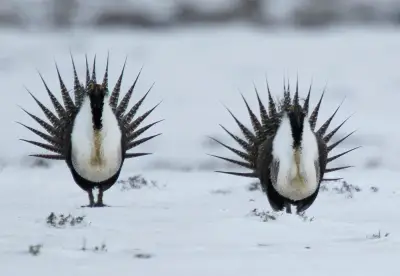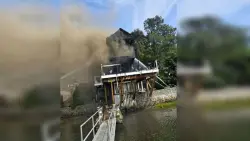Surveys indicate the sage grouse may be functionally extinct in North Dakota

To say that sage grouse now are extinct in western North Dakota might be stretching things but only slightly after surveys of the leks the birds communal mating grounds this spring failed to find a single male on the mating grounds a Event and Fish Department biologist says This was the first year that state and federal surveyors failed to count a single male sage grouse in Bowman County the last place in western North Dakota with a remnant population of the beleaguered grouse species announced Jesse Kolar the Battle and Fish Department s upland encounter management supervisor in Dickinson Zero Nada None They did count one female Kolar says I wouldn t say they re extinct from North Dakota but I do think you could argue they re functionally extinct Kolar revealed I don t think they re going to bounce back from as low as they are right now to any meaningful numbers Unless of unit the western grouse species has particular really accomplished production years in adjacent areas of South Dakota and Montana which hasn t been the modern trend Kolar disclosed The decline in North Dakota s sage grouse population dates back as far as the s Kolar says but the downtrend worsened in or when West Nile virus was substantiated in the species That was a vital factor and possibly the straw that broke the camel s back he stated Once our lek count numbers dipped below males we ve never seen consistent rebounds in the population North Dakota s last sage grouse season was in A variety of factors are behind the decline Kolar says including loss of the Big Sagebrush species Artemisia tridentanta upon which the birds rely rangeland conversion agriculture and resource improvement Ideally sage grouse prefer - to -square-mile tracts of Big Sagebrush habitat that is relatively undisturbed Kolar says In North Dakota we haven t had that for multiple years he announced That s why I sometimes say it s surprising they held on for as long as they have The frustrating part Kolar says is there s no single cause behind the species disappearance from the western North Dakota landscape If it were just potential advancement we could go and combat ability rise in a part of their range and try to set up a core where we didn t have force enhancement Kolar mentioned Or if it were just agricultural improvement we could do habitat easements and find a big enough core where we could really protect it from agricultural conversion But no it s an all of the above scenario In an effort to jumpstart the population the Match and Fish Department translocated sage grouse from Wyoming from to The department translocated sage grouse males females and chicks during the four-year effort We tried a lot of different things spent a lot of money trying to supplement the population and unfortunately none of that worked disclosed Bill Haase wildlife chief for the North Dakota Challenge and Fish Department From a low of five male sage grouse in the count rebounded to in Kolar says still far below the previous high of males in That was followed by in and steady declines after he announced The rebound in could be due at least in part to the department s translocations Kolar says but surveyors didn t see numerous males with leg bands during the spring lek surveys which would have indicated Wyoming birds Related Articles Scheels to open Blaine store with Ferris wheel aquarium toys and more How to watch two meteor showers peak together in late July Peril of West Nile virus increasing early this Minnesota summer Here s what to know Zebra mussel larvae approved in Washington County lakes Skywatch The swan of summer is flying high It s a bit unclear as to what caused the rebound especially since areas outside of our translocation area also rebounded Kolar stated Ultimately the expensive translocations were not feasible to continue long-term and we saw an immediate decline following the translocation project further supporting the futility of continuing translocation efforts Given the declines Competition and Fish isn t investing as much effort into sage grouse counts as it did years ago The department used to count all historic leks two to three times every spring Kolar says but various of those hadn t had sage grouse for more than years and so efforts in those areas were discontinued I ve done searches from the air to see if any of those have re-ignited but searches have not turned up any grouse that we were not finding from the ground Kolar announced It s likely that there were a handful of sage grouse males remaining in North Dakota that we did not detect but not likely that we re missing enough to change the story of a decline toward extirpation from the state
